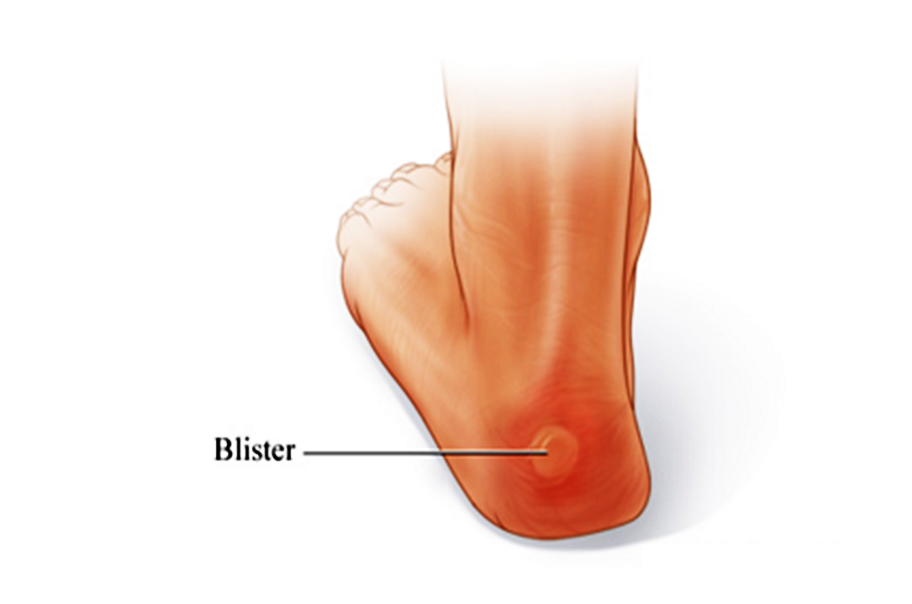Blisters
Blisters are one of the most common running injuries. Find out what causes them, how to treat them and most importantly, how to prevent them.
What are blisters?
Blisters are basically pockets of skin filled with fluid. They form when the layers of the skin (dermis and epidermis) separate and fluid flows into the gap, causing pressure and swelling.You can also get a blood blister if blood flows into the gap between the layers of skin.
Causes
Blisters are caused by a combination of friction and moisture around the feet. That’s why they’re a problem for runners – your shoes rub against your feet as you run and sweating keeps the area moist.
Here are some tips to help avoid blisters
- Buy good quality running footwear, and get expert advice from a running shop about what’s right for your needs. Avoid shoes which press against the tops or sides of your toes, and shoes with a higher ankle counter, higher heal counter, or unusually high instep.
- Don’t wear new shoes for a long run or race – put on a comfortable, worn-in pair instead.
- Invest in some sports socks which are designed to draw moisture away from your feet. Just because socks have a sports label, it doesn’t mean they’re always suitable for running. For example, cotton socks tend to absorb moisture and then the fabric dries hard, increasing the risk of blisters.
- Try to keep your feet dry while you’re training. If it’s easy to avoid a puddle or wet grass then do so.
- Apply a drying agent (for example methylated spirit) to areas of your feet that are prone to blistering, but avoid getting any onto existing blisters – this can be painful.

Is it a good idea to pop blisters?
The size and location of a blister determines whether you should pop it or not.
Ideally you should keep blisters intact because while they’re closed, they’re sterile and unlikely to get infected. However, if a blister is in a prominent place where it’s put under pressure or rubbed against, popping it is often the best option.
To pop a blister, lance the side of it with a clean needle and gentle squeeze to drain the fluid. It’s best to leave the top of the blister in place to keep out dirt and germs as it heals.
Put an antiseptic dressing over the blister, and change it regularly. Make sure the dressing fits well and doesn’t move around when you’re wearing shoes.
How can you treat blisters?
Whether a blister has burst naturally or you’ve deliberately popped it, it’s best to follow the same advice of applying an antiseptic dressing and changing it regularly.
There’s a greater risk of infection from blood blisters so be extra careful with them. See your doctor if you’re concerned about a blister or there’s severe inflammation, redness, pain or swelling.

